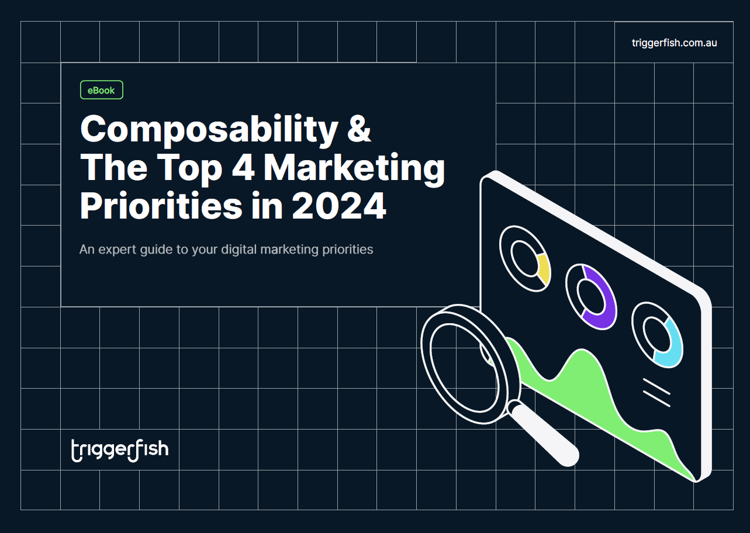Welcome to part 5 of our 5-part series that will explore the composable strategies and the top 4 marketing priorities in 2024.
With the current prominence of composable technologies, Chief Marketing Officers (CMOs), Chief Technology Officers (CTOs), and Chief Information Officers (CIOs), face a crucial business question: Are the technology-driven benefits for composable technologies aligned with business and marketing goals?
According to Gartner, while composability is gaining traction, not all businesses are well-positioned to harness its full potential. Read related article Five Levels of Composability Readiness.
At Triggerfish, we’ve identified the top 4 marketing priorities that are crucial for CMOs and organisations assessing composable technologies in 2024.
These include:
- Personalisation Effectiveness
- Data-Driven Engagement
- Strategic Budget Allocation
- Modernising MarTech Team Structures
In this article, we will explore the fourth point above.
Transforming Team Structures for Modern Marketing
Modern marketing requires a blend of skills, technology, and strategy. It’s not just about having the right tools but also about having a well-skilled team capable of leveraging them to drive significant marketing performance and business impacts. Besides the shift in resourcing and responsibilities across, Marketing teams are confronted with 3 pivotal trends that are reshaping their approach to Marketing Technology (MarTech) strategy:- The presence of technical skills gaps,
- the impending era of a cookieless future, and
- the essential need for successful collaboration with Information Technology (IT).
In addition, the increased integration between marketing and sales emerges as a dual-edged sword, presenting both a challenge and a significant opportunity for marketing leaders. Navigating these trends with agility and foresight will be crucial for the sustained success of marketing initiatives.
Logically, this requires marketing leaders to invest in capacity and performance gaps within current team structures.
Key Elements of a Performance-Centric MarTech Structures
1. Integrated Marketing Skills at the CoreIn today’s marketing world, it’s vital to have a team that combines traditional marketing skills, acquisition and content skills and digital technology expertise. Businesses that want to operate effective marketing that generates business impact need cross-functional teams that can work quickly and confidently in challenging environments with the right tools and the ability to use them well.
2. Integration of Technology, Data and Analytics into Marketing Functions
Modern marketing relies on the integration of Technology, data and analytics. The era where these functions operated in silos is over, and together they allow businesses to collect, analyse, and use customer data to create effective marketing strategies that are measurable, customer-focused and outcome driven.
3. Empowering Marketing Operations
Marketing Ops plays a pivotal role in orchestrating the use of technology, managing workflows, and ensuring that marketing strategies are executed efficiently. This includes overseeing technology deployment, automating digital campaigns, always-on personalization, and analysing performance metrics to measure outcomes and refine business strategies on a frequent basis.
For CMOs, this means having a comprehensive grasp of data lifecycles and governance, data tracking, and its broader business implications.
To continue reading about composability, download our eBook.




